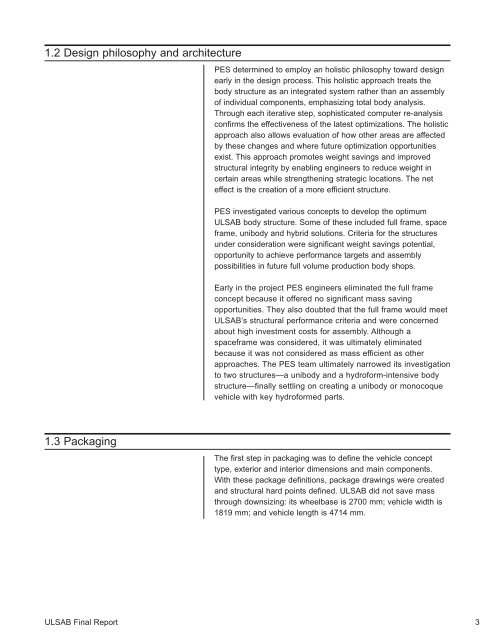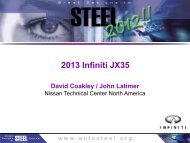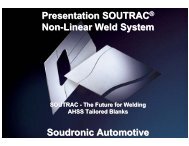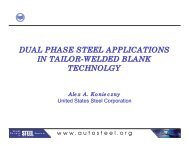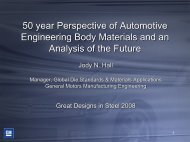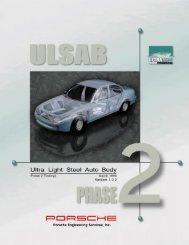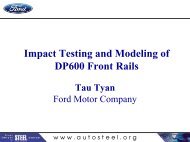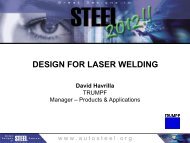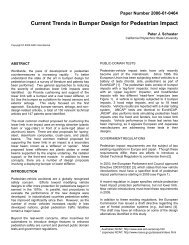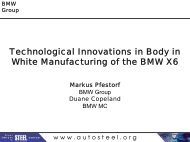UltraLight Steel Auto Body - Final Report - American Iron & Steel ...
UltraLight Steel Auto Body - Final Report - American Iron & Steel ...
UltraLight Steel Auto Body - Final Report - American Iron & Steel ...
Create successful ePaper yourself
Turn your PDF publications into a flip-book with our unique Google optimized e-Paper software.
1.2 Design philosophy and architecture<br />
1.3 Packaging<br />
PES determined to employ an holistic philosophy toward design<br />
early in the design process. This holistic approach treats the<br />
body structure as an integrated system rather than an assembly<br />
of individual components, emphasizing total body analysis.<br />
Through each iterative step, sophisticated computer re-analysis<br />
confirms the effectiveness of the latest optimizations. The holistic<br />
approach also allows evaluation of how other areas are affected<br />
by these changes and where future optimization opportunities<br />
exist. This approach promotes weight savings and improved<br />
structural integrity by enabling engineers to reduce weight in<br />
certain areas while strengthening strategic locations. The net<br />
effect is the creation of a more efficient structure.<br />
PES investigated various concepts to develop the optimum<br />
ULSAB body structure. Some of these included full frame, space<br />
frame, unibody and hybrid solutions. Criteria for the structures<br />
under consideration were significant weight savings potential,<br />
opportunity to achieve performance targets and assembly<br />
possibilities in future full volume production body shops.<br />
Early in the project PES engineers eliminated the full frame<br />
concept because it offered no significant mass saving<br />
opportunities. They also doubted that the full frame would meet<br />
ULSAB’s structural performance criteria and were concerned<br />
about high investment costs for assembly. Although a<br />
spaceframe was considered, it was ultimately eliminated<br />
because it was not considered as mass efficient as other<br />
approaches. The PES team ultimately narrowed its investigation<br />
to two structures—a unibody and a hydroform-intensive body<br />
structure—finally settling on creating a unibody or monocoque<br />
vehicle with key hydroformed parts.<br />
The first step in packaging was to define the vehicle concept<br />
type, exterior and interior dimensions and main components.<br />
With these package definitions, package drawings were created<br />
and structural hard points defined. ULSAB did not save mass<br />
through downsizing: its wheelbase is 2700 mm; vehicle width is<br />
1819 mm; and vehicle length is 4714 mm.<br />
ULSAB <strong>Final</strong> <strong>Report</strong> 3


